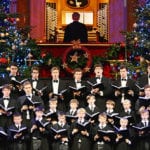 Movies and TV
Movies and TV  Movies and TV
Movies and TV  Creepy
Creepy 10 Eerie & Mysterious Ghosts of the Pacific Coast
 Weird Stuff
Weird Stuff 10 Typos That Accidentally Changed History
 History
History 10 Times Trickery Won Battles
 Technology
Technology 10 Awesome Upgrades to Common Household Items
 Misconceptions
Misconceptions 10 Hilarious (and Totally Wrong) Misconceptions About Childbirth
 Weird Stuff
Weird Stuff 10 Warning Labels That Exist Because Someone Actually Tried It
 Health
Health Ten Confounding New Inventions from the World of Biomedicine
 Creepy
Creepy 10 Death Superstitions That Will Give You the Creeps
 Movies and TV
Movies and TV 10 Movies That Get Elite Jobs Right, According to Experts
 Movies and TV
Movies and TV 10 Most Realistic Medical TV Shows of All Time
 Creepy
Creepy 10 Eerie & Mysterious Ghosts of the Pacific Coast
 Weird Stuff
Weird Stuff 10 Typos That Accidentally Changed History
Who's Behind Listverse?

Jamie Frater
Head Editor
Jamie founded Listverse due to an insatiable desire to share fascinating, obscure, and bizarre facts. He has been a guest speaker on numerous national radio and television stations and is a five time published author.
More About Us History
History 10 Times Trickery Won Battles
 Technology
Technology 10 Awesome Upgrades to Common Household Items
 Misconceptions
Misconceptions 10 Hilarious (and Totally Wrong) Misconceptions About Childbirth
 Weird Stuff
Weird Stuff 10 Warning Labels That Exist Because Someone Actually Tried It
 Health
Health Ten Confounding New Inventions from the World of Biomedicine
 Creepy
Creepy 10 Death Superstitions That Will Give You the Creeps
 Movies and TV
Movies and TV 10 Movies That Get Elite Jobs Right, According to Experts
10 Popular Christmas Songs With Creepy Origin Stories
From Halloween until after New Year’s, Christmas carols seem to blare in every store and car radio in America. But despite the merriment of the holiday season, some of the most popular carols actually have incredibly creepy origins, which can change the entire way you listen to the song. Here are some of the creepiest Christmas song origin stories, from a tune about the slaughter of innocent children to a carol that traces its roots back to Nazi Germany. Merry Christmas in July!
10‘Coventry Carol’
The “Coventry Carol” proves that not all Christmas songs have a cute origin story. This carol dates all the way back to pre-modern England, when villagers still performed “mystery plays,” or reenactments of popular Bible stories. Some of the most prevalent included the Fall of Man, the Building of the Ark, and, of course, the Nativity. The “Coventry Carol” is from a play that occurs soon after the birth of Christ, in the city of Bethlehem. The reenactment depicted the slaughter of innocents, when King Herod ordered the massacre of the city’s male infants in an attempt to weed out the Messiah. So the song, essentially, is a funeral dirge, where the mothers of the murdered children sing one last lullaby to their dead sons.
The mystery plays were meant to help a largely illiterate population memorize their Bible stories, and this one must have stuck, because the “Coventry Carol” is still one of the most commonly performed Christmas songs. Even its modern popularity can be traced back to a traumatic event. The song first found a wider audience during World War II, right after the bombing of the English city of Coventry. BBC’s Empire Broadcast played the carol during their Christmas show, which concluded with a performance of the song from the bombed ruins of the city’s cathedral.
9‘Down In Yon Forest’
(The ‘Corpus Christi Carol’)
With cheerful lyrics about a bleeding knight and a hound licking at his wounds, it’s no wonder that “Down in Yon Forest” is a lesser-known Christmas carol. But the song actually dates back to the 15th century and isn’t really about Christmas at all—a lot of scholars think that it refers to the Holy Grail legend and Jesus bleeding from his wounds on the cross. The “hall” in the lyrics is allegedly the castle of the Grail, where Christ’s blood was collected, and the bleeding knight in the song is supposedly Jesus himself.
Others think that the bleeding knight is a character called the “Fisher King” in the legends of King Arthur. In the Arthurian legend, the King is the last of a long line of descendants charged with protecting the Holy Grail. According to myth, the Fisher King’s legs are perpetually wounded, and he’s unable to move on his own or father a child, which reduces his kingdom to a barren wasteland.
One researcher has even suggested that the carol has something to do with the scandals of the Tudor era and that the falcon mentioned in some versions of the song symbolized Henry VIII leaving Catherine of Aragon for Anne Boleyn. Whatever the case, with its bloody imagery and haunting tune, it’s guaranteed to give you the chills if you hear it on Christmas Eve.
8‘I Wonder As I Wander’
John Jacob Niles, the composer of “I Wonder as I Wander,” tries to make its origin story sound cheerful, but it’s actually pretty creepy. In 1933, at the height of the Great Depression, Niles was walking around an Appalachian town in North Carolina when he ran into an impoverished family who were about to be evicted from the town. As the mother and father were scrounging for gas money, their “tousled, unwashed” daughter came out and started singing three lines of a song. Niles paid her a quarter a performance to try to get her to perform the whole song, but she just kept singing the same garbled three lines over and over. After three tries, Niles took the melody and used it to write a song about Jesus being born.
7‘Es Ist Fur Uns Eine Zeit Angekommen’
(‘Unto Us A Time Has Come’)
A popular Christmas carol in Germany, “Unto Us a Time Has Come” was originally a religious song about the birth of Jesus. But the version that’s sung in Germany today actually comes from the Nazis, when they waged a war on Christmas because it was problematic for their regime.
If you think about it, Christmas was troublesome for a fascist political group trying to systematically eliminate the Jews. Jesus was Jewish, after all, and many of the popular symbols of Christmas were also a thorn in the Nazis’ collective side. Stars, especially, were a problem—the six-pointed star was also a Jewish symbol, and a five-pointed star had been adopted as an emblem by the Soviets, one of Germany’s opponents in World War II. In response to these issues, the Nazis decided to try to secularize the holiday, attempting to make it into a “Germanic” winter solstice festival.
That’s also where the carol comes in. Nazi poet Paul Hermann rewrote “Unto Us a Time Has Come” as a simple winter song about walking in the snow, and the original version never managed to make a comeback. If you hear the song being sung in Germany today, chances are that it’s the Hermann version from the Nazi period.
6‘Zwarte Piet, Wiedewiedewiet’
(‘Black Pete, Weed-A-Weed-A-Wheat’)
“Zwarte Piet” is a Belgian song about “Black Pete,” a popular Dutch Christmas character who helps Saint Nicholas deliver presents. The carol seems fairly innocuous on the surface. The singers ask Black Pete to send Santa their regards and toss something in their empty shoe, a reference to the Belgian/Dutch tradition of leaving shoes out for Saint Nicholas to fill instead of stockings. The problem? Black Pete is actually a horribly racist character and has been controversial in the Netherlands for decades.
You see, actors who play Black Pete in Christmas celebrations always perform in blackface, and the character is almost always represented in books and popular culture as an offensive caricature of a black man. The Dutch insist that Black Pete is harmless and that his face is black because he’s sooty from coming down the chimney. Critics, however, point out that his clothes somehow always remain soot-free and miraculously intact whenever he’s pictured. On top of that, in the original book that helped cement the Black Pete tradition, a white Santa brings his sidekick to the Netherlands on a ship and treats him like a servant throughout the course of the story.
It also doesn’t help that a typical Black Pete costume includes a coarse Afro wig and huge, minstrel-y, bright red lips. So sing the song, by all means, but just know that the funny character you’re singing about is essentially a slave who is always depicted by a white man in blackface.
5‘Here We Come A-Wassailing’
“Here We Come A-Wassailing” is possibly one of the most traditional Christmas carols in existence, and it’s usually heard from door-to-door carolers throughout the holiday season, especially in the UK. The song is all about Christmastime good cheer and generosity, with lyrics that beseech the owner of the house to pour the carolers a glass of beer and slip them a few coins before they leave. It’s the origin of the wassailing tradition that really makes this song creepy.
Historically, the custom started in feudal England on the estates of lords, where wassailing served as a “safety valve” to keep the peasants from becoming too resentful of their masters. The lord of the manor would give food and drink to peasants who came to wassail at their door during the winter, in exchange for them giving their blessing and goodwill. Essentially, the lord was giving his poor, socially inferior subjects a few handouts to ensure that they wouldn’t rebel against him in the coming year. But the earliest wassailing origin story dates from AD 1135 and claims that a king named Vortigern was served wine by a very pretty young peasant girl who greeted him with “Lavert King, was hail!” The king immediately wanted to sleep with her, so he responded with his own toast (“drinc hail”), kissed her, and plied her with wine before taking a drink himself. Thus, the tradition of wassailing was born. So, when people sing carols today, they’re unintentionally paying homage to social inequality and a toast created by a lecherous old king.
“Here We Come A-Wassailing” is also unfortunate in and of itself, because it specifically used to be sung by beggars and orphans on the streets of England when they would beg for food around Christmastime.
4‘The Huron Carol’
Invented by John de Brebeuf, a Jesuit missionary to the Huron tribe in Canada, this 17th-century carol was intended to teach the natives about the birth of Jesus by incorporating elements of their own culture into the story. So, in the lyrics, Christ is born in a bark lodge and wrapped in rabbit skin, while three wise chiefs gift him with offerings of fox and beaver pelt. It’s a little corny, sure, but nothing too creepy. That is, until you find out how Brebeuf eventually died.
While the Hurons tolerated his presence and religious teachings, the Iroquois were not too happy about Brebeuf’s attempts to convert local tribes to Christianity. So, in 1649, they captured him with a few other missionaries and burned them at the stake after ritualistically torturing them. Part of the torture involved pouring boiling water over Brebeuf’s head to mock baptism, and the natives also drank his blood to absorb his courage for tolerating the pain. They finally killed him, but even the death itself was painful. So, if you ever listen to this peaceful hymn, remember that it might have been one of the contributing factors to its author’s painful death.
3‘The Cherry Tree Carol’
+
“The Cherry Tree Carol” is a song about the unborn Jesus Christ speaking to Joseph from inside Mary’s womb, so the lyrics themselves are already pretty creepy. It tells the story of Mary and Joseph walking through an orchard, where Mary asks Joseph to pick some cherries for her to eat. Joseph spitefully responds that the real father of her child can pick the fruit for her (in this particular song, he’s apparently skeptical of the whole “virgin birth” thing), which leads the fetus in Mary’s uterus to order Joseph to pull down a branch for his mother. The whole story is vaguely unsettling and definitely casts baby Jesus in a more ominous light.
According to some scholars, the song originated from the Infancy Gospel of the Pseudo-Matthew, a ninth-century Latin text of dubious authorship. The original story that inspired the song is only slightly better. According to the author, the miracle actually took place after the birth of Jesus, when Mary and Joseph were fleeing from King Herod. The family paused to rest under a date tree, which Jesus (who would only have been around two at the time) ordered to lower its branches so his mother could pick some dates. Though this version is a little better than an unborn baby speaking from his mother’s womb, it’s still pretty disconcerting to think of two-year-old Jesus speaking in full, advanced sentences like a possessed kid from a horror movie.
2‘I Saw Three Ships’
The popular Christmas carol “I Saw Three Ships (Come Sailing In)” has confused some scholars for centuries. The most popular interpretation is that the titular three ships in the song represented the three wise men in the nativity story, but it’s still unclear how a trio of boats could have arrived in landlocked Bethlehem on Christmas Day. The most prevalent theory today, however, suggests that the song actually doesn’t refer to the Christmas story at all but instead to something much less adorable. Scholars now suggest that in the original song, the ships were transporting the skulls of the three wise men to Cologne Cathedral in Germany.
To this day, the cathedral in Cologne is known for the Shrine of the Three Kings, a gilded sarcophagus that’s apocryphally said to contain the remains of the Biblical Magi. Many now think that “I Saw Three Ships” references the transport of those remains to Germany in AD 1162, which makes the song less about the birth of Jesus and way more about the internment of human remains in their final resting place.
1‘Jolakotturinn’ (‘The Christmas Cat’)
“Jolakotturinn” (or, “The Christmas Cat”) is an incredibly popular Christmas song in Iceland, performed by Bjork, among others. The song gets its name from a popular Icelandic legend about the Yule Cat, a fearsome beast that’s said to eat children who don’t receive new clothes for Christmas. It seems a bit odd to punish someone for not getting a specific gift, but apparently it’s because traditional Icelandic families tried to finish all the work with their autumn wool harvest by Christmastime, and those who helped contribute received a new piece of clothing as one of their gifts. So, if children didn’t find at least a pair of socks in their stocking, it basically meant they had been lazy and hadn’t helped with the family chores.
Icelandic Christmas lore can actually be incredibly gruesome. The Yule Cat is also said to live in the same cave as Gryla, a huge ogress who lives in the mountains of Iceland and boils naughty children in her cauldron. She’s married to another bloodthirsty ogre and is also the mother to the 13 Yuletide Lads, who also have a reputation for eating the occasional naughty child.
I’m a Reuters intern and aspiring narrative journalist with an irrepressible love for random trivia. Follow me on Twitter.








